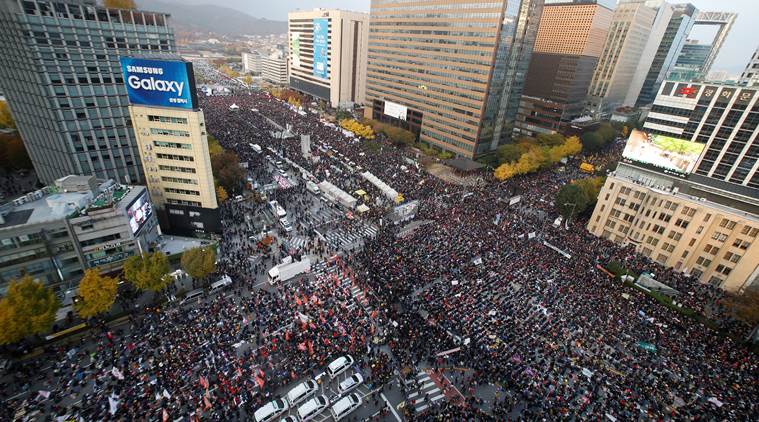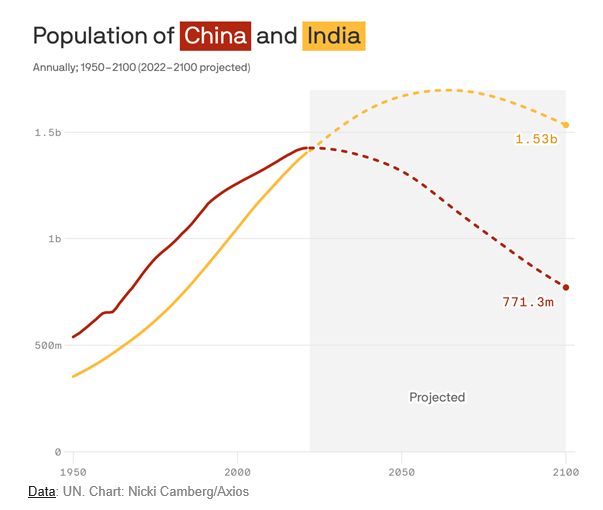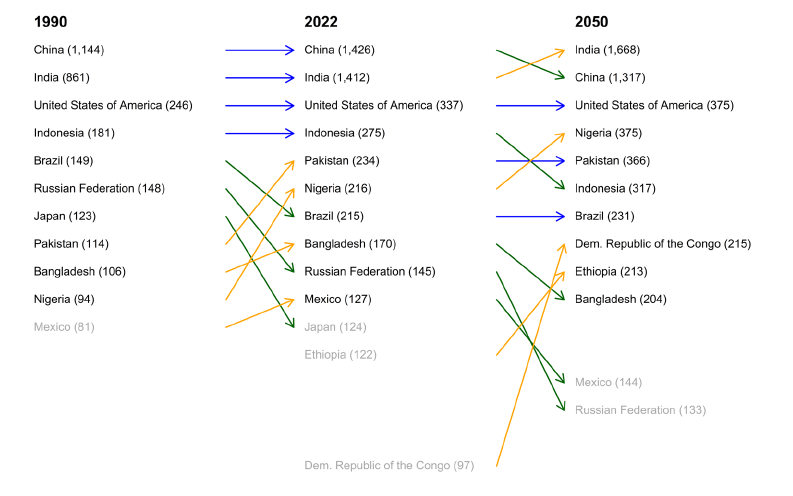
This month, the United Nations released its report on the latest global population trends and it delivered quite a few surprises…and even a bit of a shock. The data shows that major population shifts are coming…and coming soon. First, in a bit of a surprise, we learn that by November 15 of this year, the world population will total 8 billion people. The U.N. says that, in the world we hope to build, that population number will represent “8 billion opportunities to lead dignified and fulfilled lives.” But it also represents 8 billion reasons to remember “our shared responsibility to care for our planet.”
And, in a bit of a shock, we learn that by next year, China will be replaced as the most populous nation in the world by India, whose rate of population growth supersedes China’s. Surprised?
Learn more on the population shifts around the globe
A largely data-driven exercise, the U.N. notes that the world population continues to grow, but the pace of growth is slowing. The organization’s data scientists study many variables to predict population growth including mortality rates, fertility rates, and emigration patterns. As you might suspect, these and the other variables they follow are changing and it is leading to a bit of a shift to a new world order.
The Population of India to Exceed China in 2023
The big surprise, which you may have heard on the news, is that by 2023 – just next year – the population of India will exceed that of China. This is a big change that will have a multi-faceted effect on the world order.
Not only will India be the world’s largest country (in terms of population), but it will be the world’s largest democracy. As such, Axios notes that U.S. administrations have been working to build closer economic and strategic ties between the two countries, to serve as a counterbalance to the growing influence of China in the region (and in the world).

Factors Affecting Population Growth
But the report had some other surprises as well. As I said, the world’s population will grow to 8 billion people by 2023…9.7 billion by 2050…and 10.4 billion by 2080, staying stable at that level until 2100. But this won’t be straight line growth among all nations. Trends vary significantly around regions and countries and that will bring many changes to the world order.
One factor impacting the changes is a declining rate of fertility, measured as the number of live births per woman. In 1950, the global fertility rate was 5 births per woman. By 2021, that rate fell to 2.3 births per woman. Zero growth is considered to be a fertility rate of 2.1 births per woman – a rate that will be globally achieved in 2050.

Other Key Revelations from the U.N. Report
A few other key points in this report are the following, listed in no particular order…
- In 2020, the global growth rate fell to under 1% for the first time since 1950.
- More than 50% of the projected increase of the global population to 2050 will be concentrated in just 8 countries – the Democratic Republic of the Congo, Egypt, Ethiopia, India, Nigeria, Pakistan, the Philippines, and the United Republic of Tanzania.
- The biggest projected losers of population by 2050 are – Bulgaria, Latvia, Lithuania, Serbia, and Ukraine. They are expected to lose 20% or more of their population by then.
- Global life expectancy at birth fell to 71.0 years in 2021, down from 72.8 in 2019 due largely to the COVID-19 pandemic. More improvements in medication and healthcare are expected to put life expectancy back on a growth track by 2050.
- The biggest driver of population growth in high-income countries will be migration…the biggest driver of population growth in low and middle-income countries will be birth rates.
Learn more about the United Nations and its activities by visiting: www.un.org.





Leave a Reply